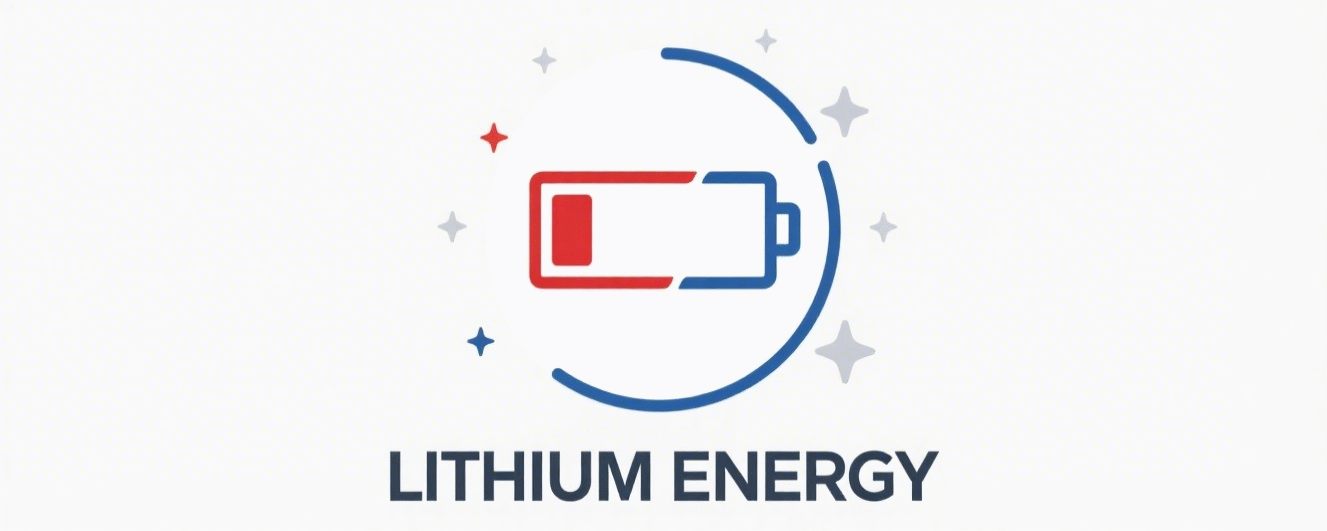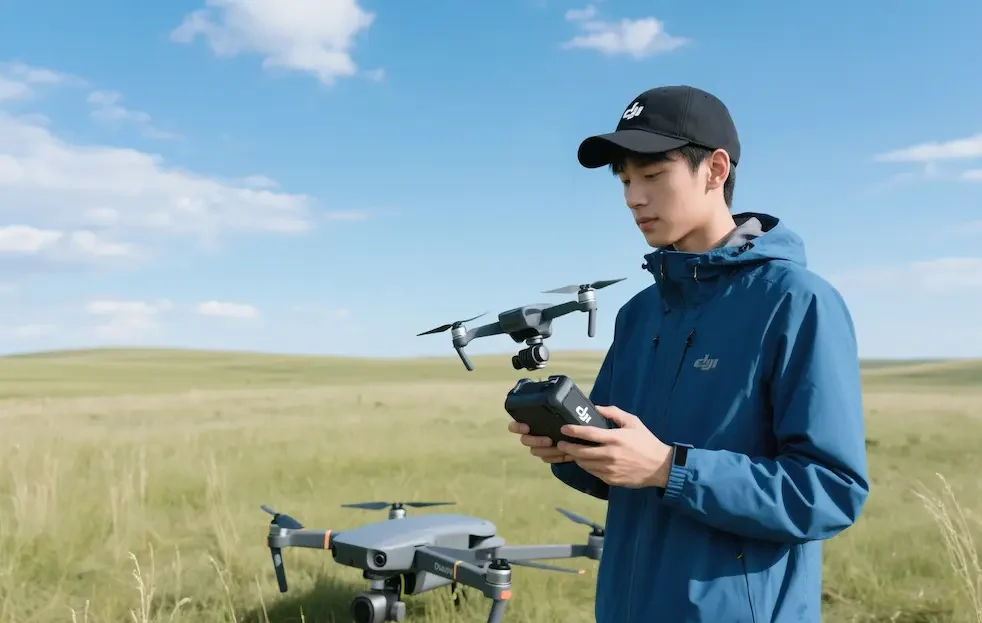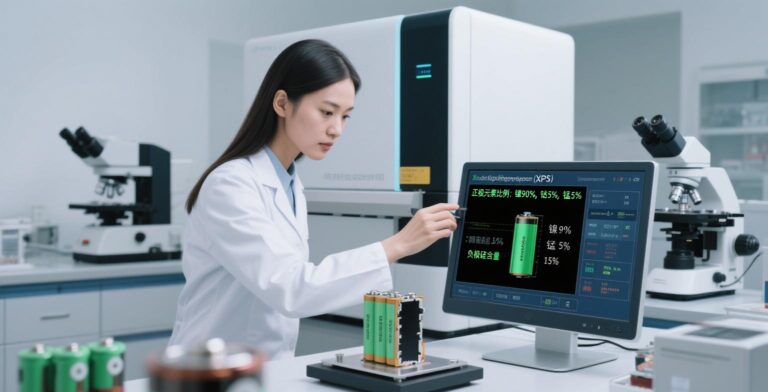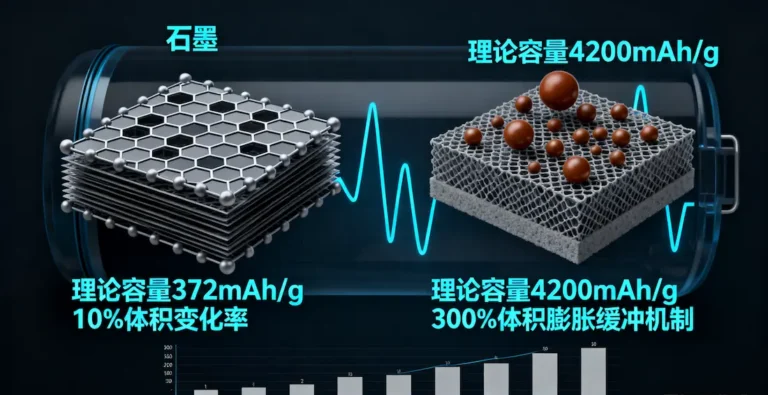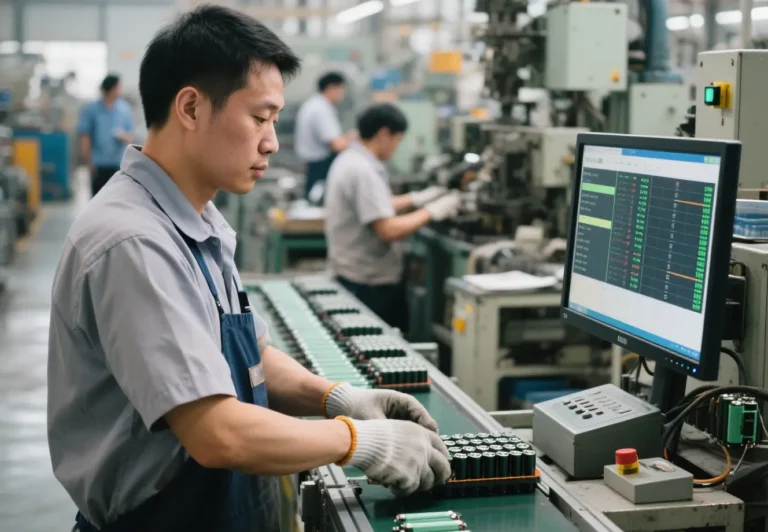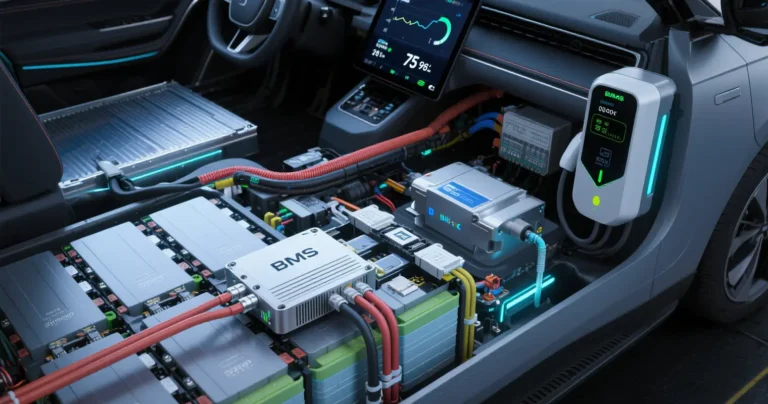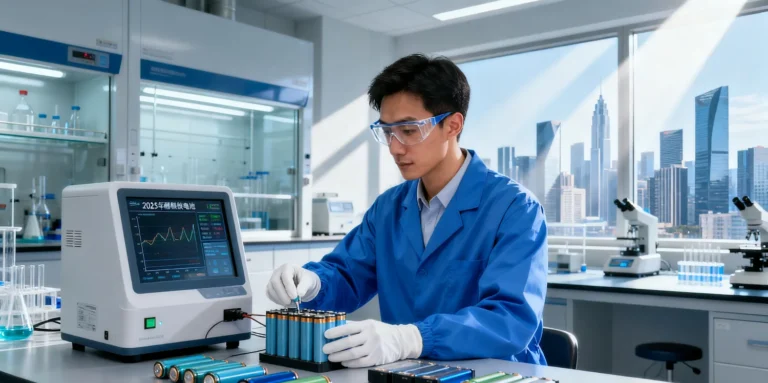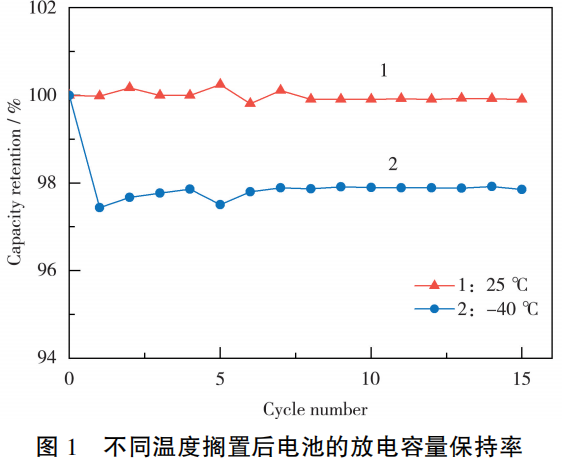Li-ion Battery Technology for DJI Drones
When consumer-grade DJI Air3 realizes a single flight of 23 kilometers through battery expansion, and when the ultra-low temperature battery of the Chinese Academy of Sciences provides stable power supply in the extreme cold of -36℃, a low-altitude revolution driven by energy innovation is reshaping the boundaries of the lithium battery industry for drones.
1, range revolution: consumer-grade unmanned aircraft lithium battery density leap
In 2025, the AI Lightwing Intelligent Patrol Joint Laboratory of Hebei Expressway Group’s Beijing-Shanghai Branch announced a breakthrough achievement: through the in-depth modification of DJI Air3’s battery system, the standard capacity was raised to 7,200mAh, which enabled the distance of a single flight to break through 23 kilometers, nearly doubling the distance compared with the original model. This technology has overcome three core problems: optimization of physical space limitations, reconfiguration of heat dissipation structure and stable adaptation of flight control system, setting a new benchmark for long-distance operation of consumer-grade drones.
Traditional consumer-grade drones generally face “range anxiety” – take the DJI Matrice 4 series as an example, its standard 99 watt-hour battery (capacity of 6,741mAh) only supports 49 minutes of range under ideal conditions, and is often reduced to less than 30 minutes in actual operations due to environmental factors. In actual operations, the battery often shrinks to less than 30 minutes due to environmental factors. The expansion technology, through high-density core stacking and intelligent power management algorithms, realizes a leap in energy density without increasing the volume, enabling Air3 to integrate video detection, remote shouting and other functions in Beijing-Shanghai high-speed inspections, at a cost of only 1/3 of that of professional industry drones.
Commercialization attempts of solid-state batteries are advancing simultaneously. The solid-state battery precursor material for low-altitude vehicles developed by Sankin Lithium under Longpan Technology, through the design of high-nickel ternary structure (LiNi₀. ₈Mn₀. ₁Co₀. ₁O₂) realizes more than 20% increase in energy density and maintains 80% capacity in -30℃ environment, providing technical reserves for the next generation of DJI industry drones.
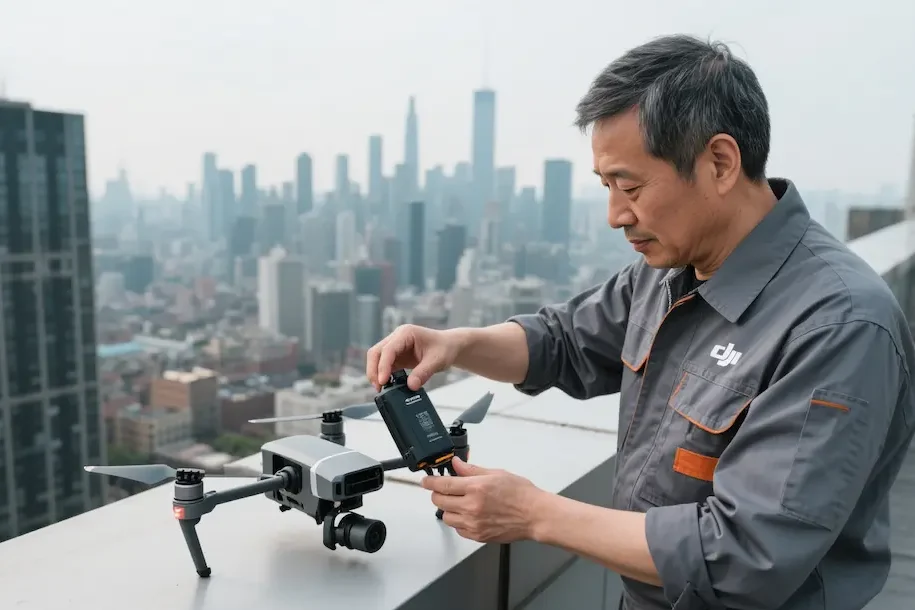
2、Industrial breakthrough: high load and extreme environment battery technology
Synergistic evolution of energy density and load
In March 2025, the exposure of DJI Matrice 400A triggered industry shock. Its 20,254mAh Li-polymer battery (48.23V voltage, 977Wh energy) adopts a dual-battery pack modular design and supports quick replacement, raising the maximum payload from 2.7kg in the M350 to 10kg, completely rewriting the upper limit of the operating capacity of industrial drones.568 This design allows the M400A to simultaneously carry multispectral sensors, LIDAR, and emergency supplies, which can be used in agricultural plant protection, disaster relief, and disaster management. This design enables the M400A to simultaneously carry multi-spectral sensors, LIDAR and emergency supplies, realizing multi-functional and integrated operations in scenarios such as agricultural plant protection and disaster relief.
China’s Solution to Conquer Extreme Cold Environments
Performance degradation in low-temperature environments has been a pain point for the industry – traditional lithium batteries lose more than 50% of their capacity at -10°C. In March 2025, Chen Zhongwei’s team at the Dalian Institute of Chemical Physics of the Chinese Academy of Sciences announced the “Ultra-low-temperature high-capacitance lithium battery”, which solves the low-temperature bottleneck with three major innovations: the first is a lithium battery that can be used at low temperatures; the second is an ultra-low-temperature high-capacitance lithium battery that can be used at low temperatures. Innovation to overcome the bottleneck of low temperature:
Electrolyte formulation innovation: the use of fluorinated ethylene carbonate (FEC) and methyl decanoate mixed solvent, the freezing point down to -75 ℃
Silicon carbon anode modification: the surface to build an elastic buffer layer to inhibit low-temperature expansion
Adaptive thermal management: low-temperature start-up self-heating rate of up to 5 ℃ / min
In the Desert River -36 ℃ real test, the battery successfully drove the six-rotor unmanned aerial vehicle stable flight, the endurance attenuation rate controlled at less than room temperature state of 10%.
3、 Solid State Battery: The Ultimate Solution for Safety and Energy
Material System Breakthrough
With the outbreak of low altitude economy, eVTOL and other manned vehicles have imposed stringent requirements on battery safety. Sulfide solid state electrolyte has become the mainstream technology route:
Xiongtao launched 60Ah solid-state battery with 90% lower risk of thermal runaway, which has been matched with medium and large-sized UAVs
Solid-state precursor material developed by Sankin Li-power jumps energy density by more than 20% through high-nickel ternary design
Moscow Institute of Aeronautics and Astronautics (MAI), Russia, released a new type of Li-ion polymer electrolyte battery at the same time, which adopts highly dispersed electrode materials and supports 10 times rated current discharge, enabling small reconnaissance The endurance of the small reconnaissance drone has increased from 20 minutes to 35 minutes.
Intrinsic Safety Verification
The core advantage of all-solid-state batteries is the complete elimination of electrolyte leakage risk. The graphene aviation battery developed by China Academy of Aeronautical Materials has an energy density exceeding 400Wh/kg, and supports 3C times rate discharge at -40℃. And DJI industry drones began to use ceramic-coated diaphragm and multi-channel liquid cooling system, such as Matrice 400A battery pack even if encountered with a pinprick or extrusion, but also through the intelligent fusion mechanism to block the heat spread.
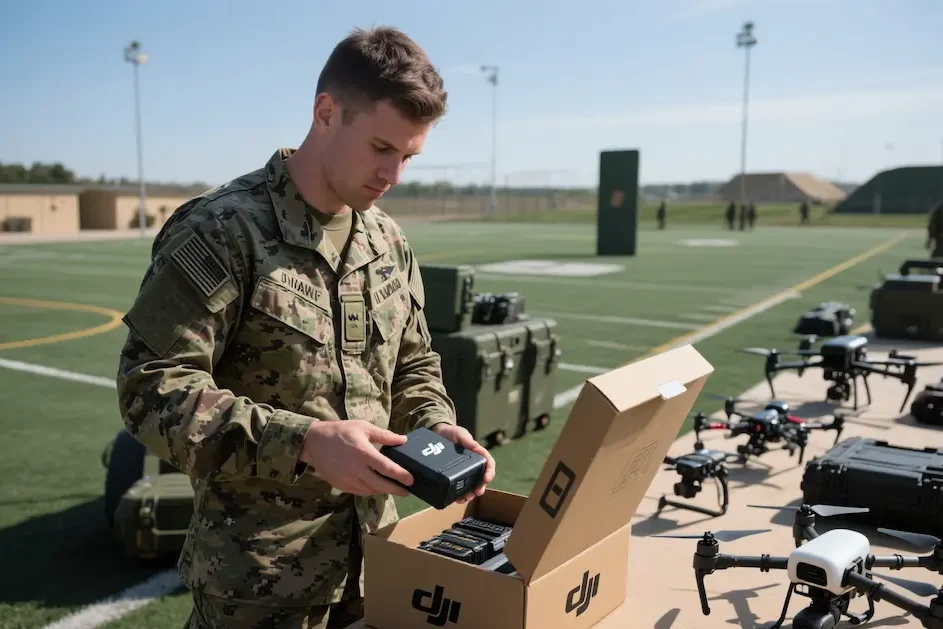
4、Application Scene Expansion: From Consumption and Entertainment to Strategic Industries
Layered penetration of civil scenarios
Instant logistics: With the support of 500 charging towers in the Yangtze River Delta, Meituan’s drones realize “in-flight charging” through magnetic resonance coupling, increasing the delivery volume by 40% in a single day.
Film and TV creation: The 977Wh battery of the Matrice 400A supports the continuous operation of an 8K video camera for 45 minutes, which meets the demand for movie-grade long-lens shooting.
Intelligent inspection: Beijing-Shanghai Expressway adopts the expanded Air3 to complete 200 kilometers of roadway inspections, increasing efficiency by 5 times compared with manual labor.
Breakthroughs in Special Operation Scenarios
Polar scientific research: CAS ultra-low-temperature batteries enable the UAV to travel over 200 kilometers in a single trip at -40℃, solving the problem of delivering materials to the polar regions.
Disaster relief: Aisino’s “Sky Link-1” satellite carries microwave power transmission modules, supporting six UAVs to realize uninterrupted delivery of materials to the disaster areas for 72 hours.
Border patrol: MAI’s high-magnification batteries provide continuous operation for Russia’s miniature reconnaissance UAVs. Providing continuous power for Russian miniature reconnaissance UAVs and maintaining stable communication in an environment of electronic confrontation.
5. Industrial chain competition: technical standards and business ecological reconstruction
China’s Standards Exported Globally
China has already grasped the rule-making power in the field of drone battery:
The GB/T 20234.4-2024 fast charging standard raises the upper limit of wireless charging power to 500W, exceeding the EU’s CE standard by 66%.
The all-solid-state battery judgment method (2025) is the first of its kind in the world, and requires that the weight loss rate be less than 1% after drying at 120℃ for 6 hours, which is a benchmark for the industry.
Relying on the Matrice 400A battery system, DJI is promoting the internationalization of its safety certification system for industrial drones, and its thermal runaway protection technology has become a reference benchmark for European and American manufacturers.8 Commercial chain competitiveness. Relying on the Matrice 400A battery system, DJI is promoting the safety certification system for industrial drones, and its thermal runaway protection technology has become a reference benchmark for European and American manufacturers.
Business model innovation
Battery bank: Shunfeng and Ningde Times launched a “degree power leasing” program, with enterprises paying RMB 0.35/Wh for actual power consumption, and operating costs of pilot enterprises in the Pearl River Delta dropped by 52%.
Carbon sinks economy: Users contribute unused batteries to participate in grid peaking, with a base income of RMB 0.2/kWh, and carbon sinks can be exchanged for accessories.
Hebei Expressway Group pioneered the “drone-as-a-service” model, which is the first of its kind in the industry. “Drone-as-a-Service” (Drone-as-a-Service) model, providing on-demand rental service of Air3, the upgraded version of range, to small and medium-sized road management enterprises.
6、Future Challenges: Industrialization Bottleneck and Global Competition
Direction of Technology Attack
Solid-solid interfacial impedance: the interfacial impedance of mass-produced solid-state batteries reaches 80-100 Ω-cm², and Jusen-Ancor has constructed LLZO buffer layer through atomic layer deposition (ALD) technology, with the goal of reducing it to less than 40 Ω-cm².
Fast-charging heat dissipation: the heat generation of solid-state batteries increases by 30% when fast-charging at more than 4C, and the need to be assisted by a liquid cooling system, which pushes up the cost by 15%.
Bio-materials application: it is difficult to reconcile the degradation period of the corn-starch-based shell with the mechanical strength, which limits its ability to be used as an industrialized battery. Bio-material application: It is difficult to balance the degradation cycle and mechanical strength of corn starch-based shells, limiting its promotion in industrial-grade models.
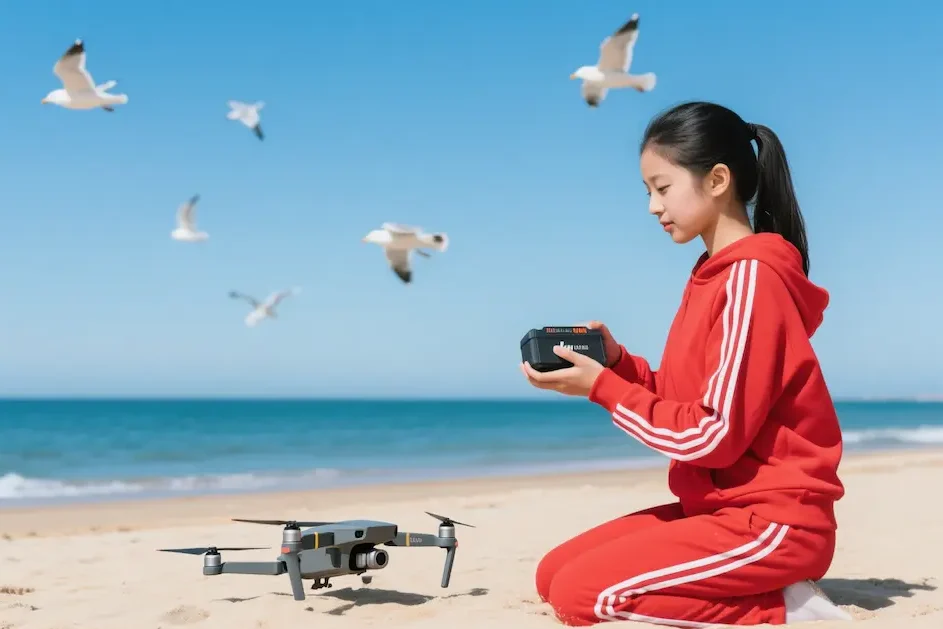
Global resource game
Cobalt and lithium constraints: Phosphorus mining, on which cobalt-free batteries depend, raises new environmental issues, and the EU’s “morality tax” increases compliance costs by 15%.
Closed-loop recycling: Tesla’s Shanghai factory deploys a liquid gallium-based melting pool, with a 90% recycling rate for end-of-life battery materials; Belgium’s Umicore utilizes a modified phage to increase cobalt recycling from 75% to 98%.3 When the expansion version of the Amplifier AIRBORNE is released, the cobalt recycling rate will increase from 75% to 98%. 98%.
When the expanded Air3 leaps over the Beijing-Shanghai highway, when the graphene battery lights up the navigation lights in the polar regions, the lithium battery for drones has evolved from an energy carrier to a nerve node of the low-altitude economy. According to the forecast of the Ministry of Industry and Information Technology, the scale of China’s low-altitude economy will reach 1.5 trillion yuan in 2025, and breakthroughs in energy technology are reconfiguring the distribution of industrial value – battery costs accounted for the proportion of the whole aircraft from 18% in 2015 to 42% in 2025, becoming the core competitiveness.
In this China-driven revolution, the boundaries of safety and performance are being redefined: the Chinese Academy of Sciences’ ultra-low-temperature technology conquers the extreme cold of -40°C, SANJIN Lithium’s solid-state precursor materials are certified by the Suzhou Low Altitude Conference, and MAI’s high-magnification batteries support frontline reconnaissance.In the next decade, the essence of competition for the low-altitude economy will be a contest between the density of the energy network and the speed of material innovation, and Chinese companies, with their 70% of the patent share of solid-state batteries for the low-altitude economy, Chinese companies have already taken the lead in this race for the trillion-dollar market.
